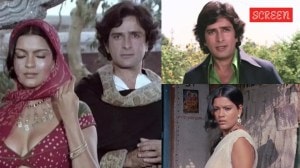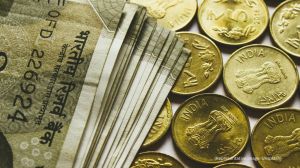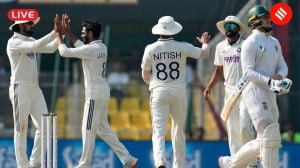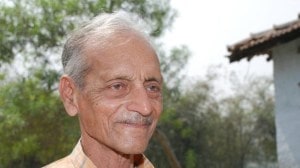A teacher’s mission
I have poured my whole life into the field of education. In return, I have reaped a rich harvest of bright students who remember their te...

I have poured my whole life into the field of education. In return, I have reaped a rich harvest of bright students who remember their teacher.” For Dr. P.L. Gawde, education expert, research scholar and writer, this is reward enough for a career in the education field spanning almost 50 years.
Former principal of the Vimlabai Garware High School, currently a member of the State Board of Secondary and Higher Secondary Education (SBSHSE) and author of books on education, Gawde’s career is characterised by his relentless search for learning. Among other awards and neatly-stacked books at his Navi Peth flat is the State Government’s Ideal Teacher Award, conferred on him in 1975.
Surprisingly, although Gawde always wanted to join the teaching profession, he started his career as a journalist. “While in school in Ahmednagar, I wanted to be a teacher. But after completing my college education from Pune, I decided to indulge in my passion for writing and joined a Marathi daily, Dainik Bharat. Journalism was considered a thrilling career then,” remembers Gawde.
Lack of adequate pay and job insecurity, however, led him to get a Bachelor in Teaching degree and opt for teaching. Gawde landed a job as a Marathi teacher in Nutan Marathi Vidyalaya (NMV) and thus began the journey that was to become the mission of his life. To facilitate the education of external students of the University of Pune (UoP), Gawde, along with S.V. Kher and V.P. Mahajan, started the Swadhayay Mahavidyalay in 1954, which he kept up along with his teaching job. “We had to start from scratch. I would teach at the school in the mornings and rush to Swadhayay in the evenings,” he remembers. Teaching now took up most of his time.
His academician’s mind found its ideal subject in the revolutionary leader, Veer Savarkar. “His poems always fascinated me as did his image as a freedom fighter. He wrote on a variety of subjects and left behind a fund of writing.” Gawde chose to concentrate on Savarkar’s personality as revealed through his literature, for his doctoral thesis in 1960. Incidentally, he was also somewhat instrumental in making Savarkar’s famous poem, Jayostute, the popular anthem it is today. “During the Chinese aggression in 1962, the All India Radio (AIR) was looking for songs to arouse patriotic fervour in citizens. The station master at the AIR knew I was conducting research on Savarkar and asked me to select one of his patriotic poems. I selected Jayostute,” he remembers.
After a short stint at NMV, Gawde joined the Maharashtra Education Society’s Vimlabai Garware High School . He was simultaneously teaching at the Abasaheb Garware College of Arts and Science, its commerce college and the UoP.
“The vocation of a teacher is to arouse the love of learning in his students, to go beyond mere textbooks and widen their horizons. I wanted to engender a love for reading and writing in students. So, in 1975, the 700th birth anniversary of Dnyaneshwar, I encouraged my students to write an essay on various aspects of the saint poet, which were later compiled and published in a book,” says Gawde.
A member of the SBSHSE, Gawde concedes that the education system has made students examination-oriented. “It is sad but true that students hanker after marks, not knowledge, because the system is so designed,” he says.
Gawde’s most rewarding moment came much after his retirement – on a 1995 USA tour. “One of my former students came to know of it. Within a few days, he had informed other students scattered all over the USA and had organised my trips to their cities. When I was due to fly back, 50 of them met me in New York. Their love and enthusiasm was touching,” he says with barely concealed pride. Today, Gawde, who will soon turn 75, spends a lot of time on his research of saint literature – he has a bibliography on Dnyaneshwar to his credit – and his writing on education. If he is still a busy man, Gawde explains by saying, “Teachers never retire. They keep imparting their learning”.




- 01
- 02
- 03
- 04
- 05



























